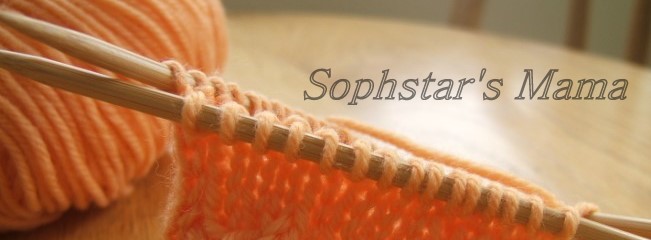I feel helpless, stuck inside of a contraction – trapped inside of my head, feeling as if my entire being is being squeezed between the walls of my womb. I need to get on top of it, be one with it, be in control. My midwife finishes filling the Jacuzzi tub and I crawl over the side into the water. It feels amazing, and suddenly I am on the outside looking in. I can think again, I’m on top of it. I imagine this must be how my baby feels, floating inside of me.
Giving birth in water is a relatively new practice, although it has its roots in the age-old practice of using water for labor pain relief, and in some cultures of giving birth in shallow coastal waters. Since the first recorded “modern” water birth in 1977, giving birth in the water has gained popularity due to its relaxing, calming, and pain-relieving effects on the laboring mother.
Giving birth in the water (waterbirth) is beneficial to both mother and baby by reducing labor pain and tears for the mother and by creating a calmer transition for the baby.
Some formal studies and lots of anecdotal data report that birthing in the water reduces the number of tears and the amount of blood loss experienced by birthing women. There are also many anecdotal reports of babies born in water receiving higher Apgar scores (a scale of 1-10 used to assess the newborn’s condition at one and five minutes after birth) than “land-born” babies, and water-born babies being calmer and less stressed in the period following birth.
Two major groups of hormones play a role in birth: the endorphins and the adrenalines. When a laboring woman is stressed, fearful, or anxious, the adrenalines are in charge; this leads to a tightening of muscles and an increase in pain, as well as making labor slow down or stall out. On the other hand, when a laboring woman is relaxed, calm, and feeling in control, the endorphins are in charge, leading to decreased pain and faster labor.
When a laboring woman can immerse herself in warm water, a much greater degree of relaxation can be achieved than is otherwise possible (save with the use of synthetic drugs). This puts the endorphins in charge and paves the way for a smooth, uncomplicated labor.
The buoyancy of water helps with labor pain as well. When most of the body is supported by water, the laboring mother can let go of everything else and instead focus inwardly on the contractions as they come. In water it is possible to move in ways that would be very difficult on land – for instance, gliding your hips in circles and figure-eights, thus changing the angle of your pelvis and helping the baby move down and out (Kitzinger, 2000).
All of these things help women better handle their contractions and to feel like they are in touch with their bodies and their babies.
Water also decreases labor time - in one study by as much as 40 minutes on average (Geissbuhler & Eberhard, 2000). While 40 minutes may not seem like long enough to matter, when you are in labor, believe me - every last little minute counts!
Giving birth in water leads to fewer tears and less episiotomies. In a Swiss study of more than 6,000 births, the waterbirth group had 22.6% less episiotomies than bed births, hardly any 3rd or 4th degree tears, and many more women experienced no tearing at all (Geissbuhler & Eberhard, 2000).
Some people speculate that the reason so many less episiotomies are performed on women laboring in water is that the caregiver simply has less access to the perineum and is therefore more likely to leave it alone. I think that another factor to both the low number of episiotomies and the lower number of tears is that when a woman is more relaxed, she is better able to open up and let the baby come down without tensing her muscles. Water also gives a greater sense of privacy (than if you were laying exposed on a bed), which adds to a woman’s comfort and relaxation.
Waterbirth also has benefits for the baby. In the womb, a baby is suspended in body-temperature amniotic fluid. Going straight from body temperature fluid to cool room-temperature air is a big shock. Being born instead into a similar medium – body-temperature water – is a smoother transition.
Many parents and midwives report that babies who were born in water cry less after birth, and are calmer and mellower in the hours following birth. Many waterbirth babies (such as Sophie) do not cry at all and simply cough or sneeze to clear their lungs and then look around, observing their surroundings calmly.
Waterbirth may not work out for everybody. In some cases waterbirth is not in the baby’s best interest. Some women will have their contractions slow down or even stop altogether when they get into the water. Just as with any birth method or environment, every woman and every baby is different – one thing will not work for all.
But for the vast majority of women and babies, waterbirth will work – and be beneficial: waterbirth decreases labor pain and the number of tears and episiotomies for the mother, and creates a calmer birth experience for the baby.
---------------------------------------------------------------
Sources:
American Pregnancy Association (2007). Water Birth. Retrieved April 17, 2008 from http://www.americanpregnancy.org/labornbirth/waterbirth.html.
Geissbuhler, V., & Eberhard, J. (2000). Waterbirths: A Comparative Study: A prospective study on more than 2,000 waterbirths. Fetal Diagnosis and Therapy, 15. Retrieved April 17, 2008 from http://data.memberclicks.com/site/wi/FD_T_Waterbirth-AComparitiveStudy.pdf.
Kitzinger, S. (2000). Rediscovering Birth. New York: Pocket Books.
Robinson, J. (2000). Waterbirth – Looking for Bad News. AIMS Journal, 12 (2). Retrieved April 17, 2008 from http://data.memberclicks.com/site/wi/AIMS_journal.pdf.
Waterbirth International (2007). Waterbirth Research Documents. Retrieved April 17, 2008 from http://www.waterbirth.org/mc/page.do?sitePageId=38565&orgId=wi.
.jpg)
No comments:
Post a Comment